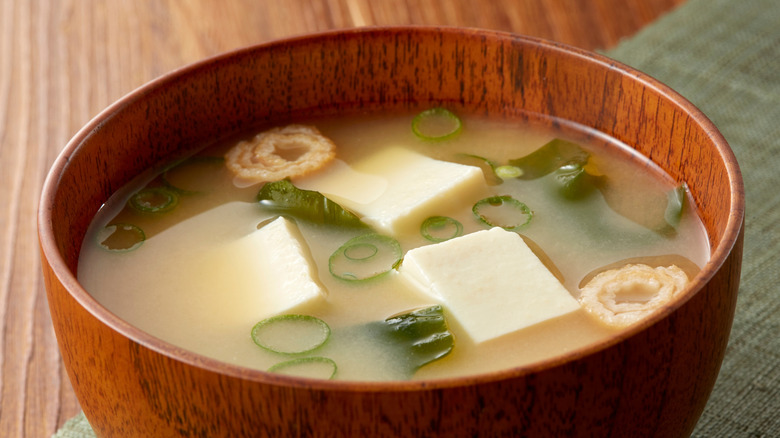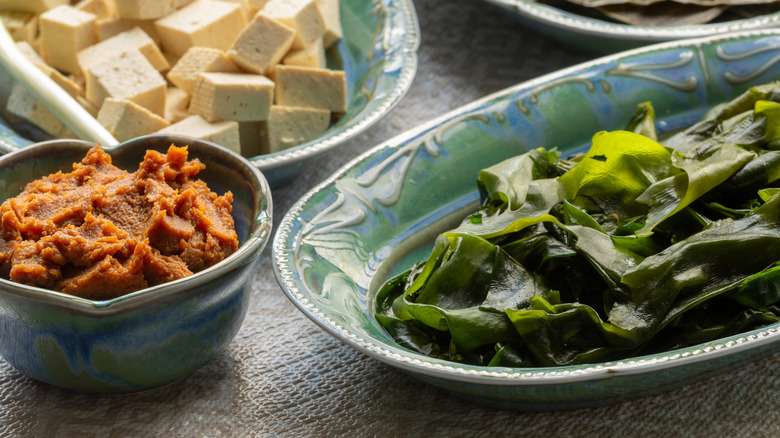What Is The Green Vegetable Found In Your Miso Soup?
If you've ever been to Japan or even so much as sat down for a meal at a Japanese restaurant, then you have almost certainly been encouraged to try miso soup. This savory, umami-loaded soup is often the preamble to an even more delicious meal, and it contains just two basic flavor profiles: miso and sea kelp. Yes, if you've ever wondered what those floating green squiggles are in your soup, it's not lettuce. It's actually a type of seaweed.
The origins of miso soup date back thousands of years, but it gained even more popularity around the 1200s when it was consumed regularly by samurai warriors in Japan. The soup is traditionally made with dashi, a type of broth (Instant dashi can be found in powder form) that's flavored with kelp — so even if you've carefully avoided those green pieces in your soup, you're technically still eating them. The miso and dashi make up pretty much all of the soup's flavor. Although other elements — like tofu or mushrooms and those little pieces of additional kelp — are sometimes added to build texture, they can be included based on preference and aren't totally necessary to lend this dish its signature flavor.
Miso soup is traditionally made with kelp
Kelp, referred to as konbu in Japanese cooking, is used in miso soup because it releases glutamate as it's heated. Glutamate is an amino acid that emits a salty, savory flavor, which gives miso soup its so-loved umami profile. It's essentially the whole form of the powder known as MSG, which is used in all kinds of cooking to add salty flavor.
Kelp is the primary ingredient in miso soup (alongside the miso itself), so while there is no way to truly avoid it unless you alter the standard recipe entirely, you can substitute other garnishes in place of those added kelp pieces if you don't want them. For texture and color, kale works well; It doesn't have much flavor, but you don't need it in this dish. Green onions are also commonly chopped and added to miso soup, which gives the dish some acidity to round out its savory flavor profile. If you want to omit the kelp, you can still keep that pop of green color by only including the green onions. Ultimately, the choice is yours, but for the most traditional version of this dish, it's worth adding the kelp.

